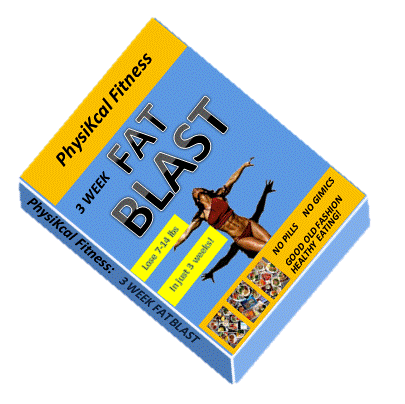
EDUCATION ZONE
Have a question or want to know more about a particular topic. Why not ask a question? We will try do write an article a week based on questions from our audience.

Bad Lower Back
Nick Wachter
Personal Trainer & Conditioning Coach
PhysiKcal Fitness; March Nov 2013
SEE A PROFESSIONAL
Firstly it’s important to know exactly what is wrong with it. So I would always suggest seeing your gp who can refer you to a physiotherapist, who will if they deem it appropriate send you for x-rays and scans. This is the advantage over private physios, were scans will bump the cost of your treatment up 10 fold. However you will have to wait a few months, so get booked into your gp as soon as possible.
Through my career I’ve met hundreds of people who I’ve helped with the basic of information and exercises. People who have had bad lower backs for months and even years have been pain free within weeks just by performing a few very basic back strengthening and postural exercises. From new exercises, to very fit sports players, from overweight individuals to those in great shape. Yes it really can be that easy. Before starting any of these it’s important you have at least seen your gp or physio who should be able to rule out slipped or herniated disc, disc degradation, ankylosing spondylitis etc. In my ten years in the industry I’ve only met about 10 people with one of these conditions (half of the cases been slipped or herniated discs).
Infact i myself seriously damaged my back playing rugby. It took 30 minutes for the paramedics to stretcher me off the pitch and i spent 5 days in a hospital bed constantly on morphine and unable to move. Luckily for me i didnt damage my spine, well not severly. The knock i had taken had caused massive swelling to the spine (as well as muscle damage), traping nerves... it was several weeks before i could walk unaided and about 4 months before i could even return to very light exercise. in total my rehab took about 9 months before i was ready to go hard again.
During this time i learnt a lot about back problems, working with physios and specialists as well as reading up. I worked on my core muscles (before it became popular) and although i still have some superficial nerve damage to the skin in the area thats about it. My back in not perfect, the impact damaged muscles and tendons in the process but through the intensive work theyre all great. Touch wood that was ten years ago and although ive had many many injuries since my back has never suuffered. Which is suprisingly when you consider several big hits that have broken color bones and dislocated shoulders and crashes on the road and mountain bikes, falling/being knocked off at 50kph.
The point is, often simple effective exercises can make such a huge difference. a surgeon cant promise you will be perfect, nor can a physio, but by doing the right exercises, you give yourself the best chance.
WHATS CAUSING IT?
For the other 99% of cases its usual simple muscle imbalance, dysfunction or weakness / tightness leading to increased pain due to stress on the lumbar or sacro iliac joint (lower back and pelvic region). So what can be done about it without seeing a professional? Simply address all of the above.
-
Get flexible
-
Get balanced
-
Get strong
-
Get muscles working in the right order
Sounds easy right?
Well actually it’s a lot easier than you would think. A few exercises address most of these problems. I would recommend booking in to see a physio or experienced personal trainer o take you through the exercises to ensure you are doing them right, because it is absolutely essential hey are performed correctly. They won’t do you any damage doing them slightly wrong (they are very hard to do badly due to their nature), they just won’t have the benefit.
How do we get flexible?
Firstly we are talking about touching your toes. That’s just hamstring flexibility. What you need it rotational flexibility of the lumbar and thoracic spine, or flexibility of the pelvis and hip. Although yoga can be good for this (don’t trust it too much, there are good and bad yoga classes/instructors like everything else) Pilates is much better. Pilates tried to address muscle imbalance as well as flexibility but does it while trying to strengthen too.
Get Balanced
Imbalance can be caused by a lot of things. Your job your hobiies etc. Maybe you sit on your coach always leaning against the arm rest. maybe you kick a ball around with your obsessed 4 year old, but only use your right leg, maybe your job involves you using one side more than the other. or it could be an old injury. The key is to get fixed. Free weights, but in partiular dumbells are great for this. Each side works individually so the sronger side cant help by doing more of the work. if you dont already use db's, give them a go. dont worry if one side is a lot waeker than the other. Thats quite common and could well be the reason your exeriencing your pain. if your not confident on your own or havent got a good trainer then try a pilates class out
Start using Fitballs and bosu’s for everything
If you’re a regular exercises you don’t need to stop all of your current training. Simply incorporate a fitball or bosu’s into a few exercises each session. That’s it
Perform you shoulder press, bicep curls, tricep extensions dead lifts and squats on a bosu’s or fitball. This will simply require your smaller lower back, pelvic/hip complex & core muscle to work more while working on your bigger muscles. By using them, they will get stronger! It’s as simple as that
Specific Exercises intended to work the core muscles.
Performing exercises that target the stabilising muscles of the spine will increase their strength but also ensure they’re doing their job. Often due to weaker postural or stabilising muscles, the larger muscles take over trying to do both jobs. This leads to the smaller muscles being used less and less and becoming weaker and weaker over time. The key to these exercises is to increase the instability every time you get good. Start of on level 1, then progress every week or so (as you get better) until you’re as good as the best.
Hyper extension
Level 1 feet against wall
Level 2 feet away from wall
Level 3 Leg raise after hyper extension
Level 4 Leg raise during hyper ext.
Level 5 Leg raise during hyper extension with grounded foot on wobble disc
Get muscles working in the right order for the right functions
This is more technical and will need the assistance of an experienced PT or ideally a physio, so we will just give an overview. Muscles firing (contraction) should work in a set predetermined sequence for any giving movement. To catch a tennis ball firstly your transverse abdominals contract to brace your pelvic hip complex, then your lower lats (amongst others) fire to stabilise the scapular (shoulder blade) and finally your deltoids contracts to lift your arm to towards the ball. These types of chains of firing events happen almost immediately. Many studies have shown people who experience pain their lover back; tend to the have the transverse abdominals fire/activate at the same time as the other (mover) muscles instead of few hundredths of a second before.
What causes this? A lack of use, poor posture or a trapped nerve in your spine for example can lead to the total dysfunction of a muscle, meaning other muscles must compensate. When the nerve is freed (after several weeks/months) not only will the smaller postural muscle be weaker but it may also be a lot harder o activate/control due to degraded neurological pathways. (Your brain isn’t at good at talking with it anymore). This is where you need the expert to ensure you are using the muscles in the correct order and not compensating using bigger muscles
Conclusion
1. Get it checked out by a physiotherapist
2. See a good sports masseuse; it may also just be a tight or pulled muscle that with a few massages disappears. (I’ve seen this happen at least 20 times). People in pain for 3 or 4 months, then 2 massages and never have a problem again.
3. Do Pilates once a week
4. Work on your core & stabilisation muscles (include bosu’s/Fitballs into your workout)
* ALWAYS SEEK PROFESSION/MEDICAL HELP BEFORE STARTING OR CHANGING ANY EXERCISE REGIME.
















A selection of some great basic and advanced fitball exercises to strengthen lower back & core muscles
Pilates home workout for beginners




















